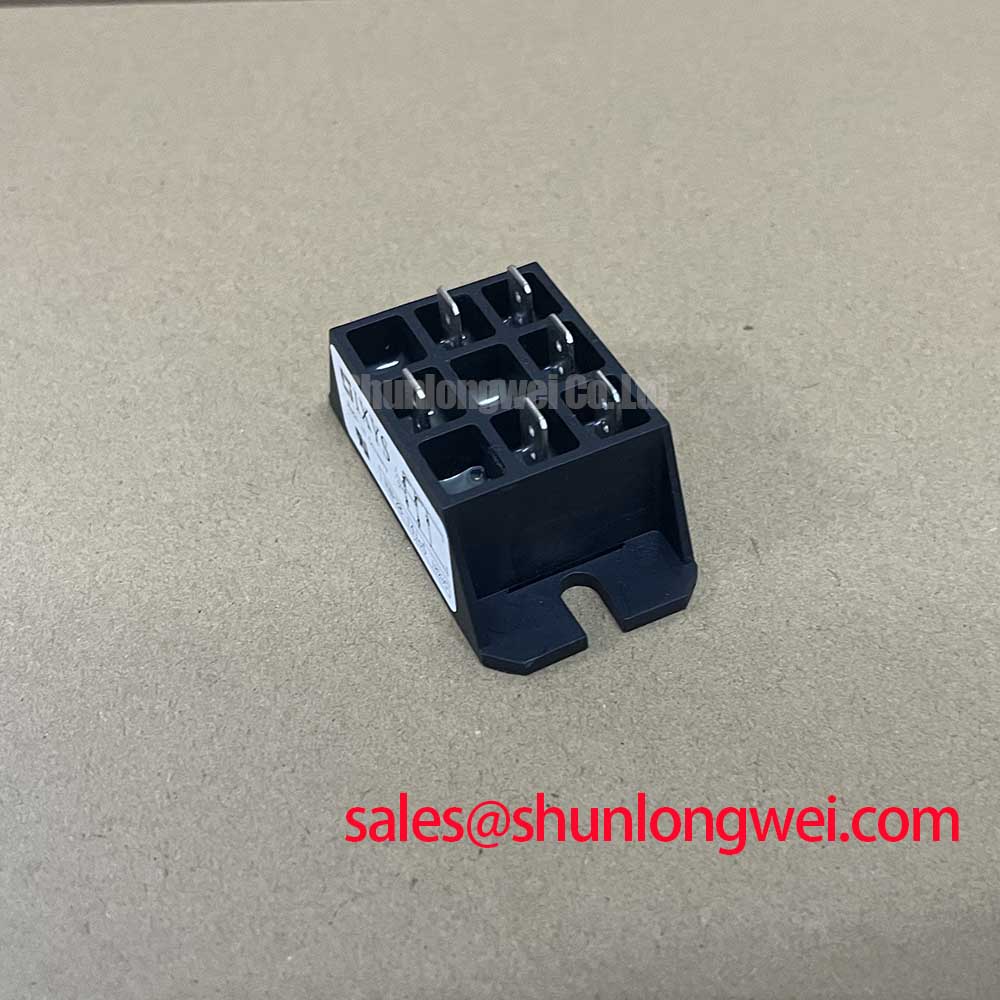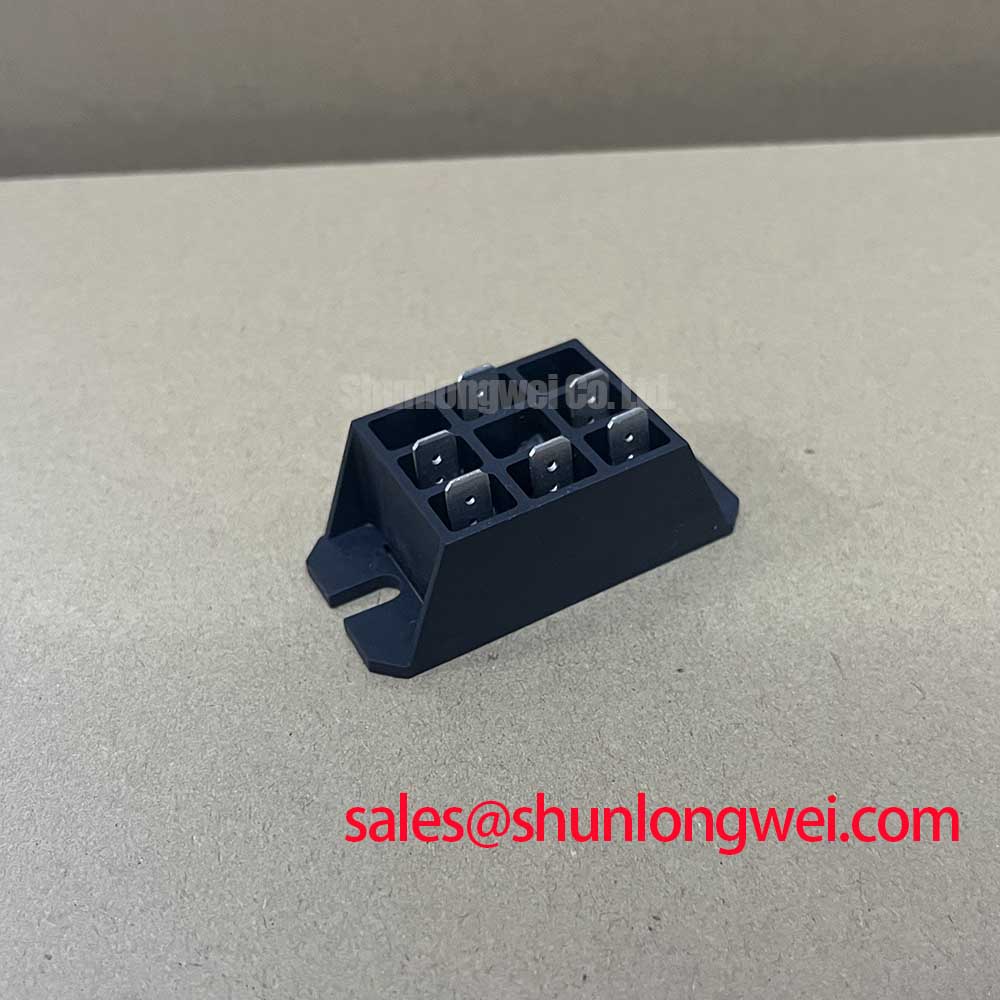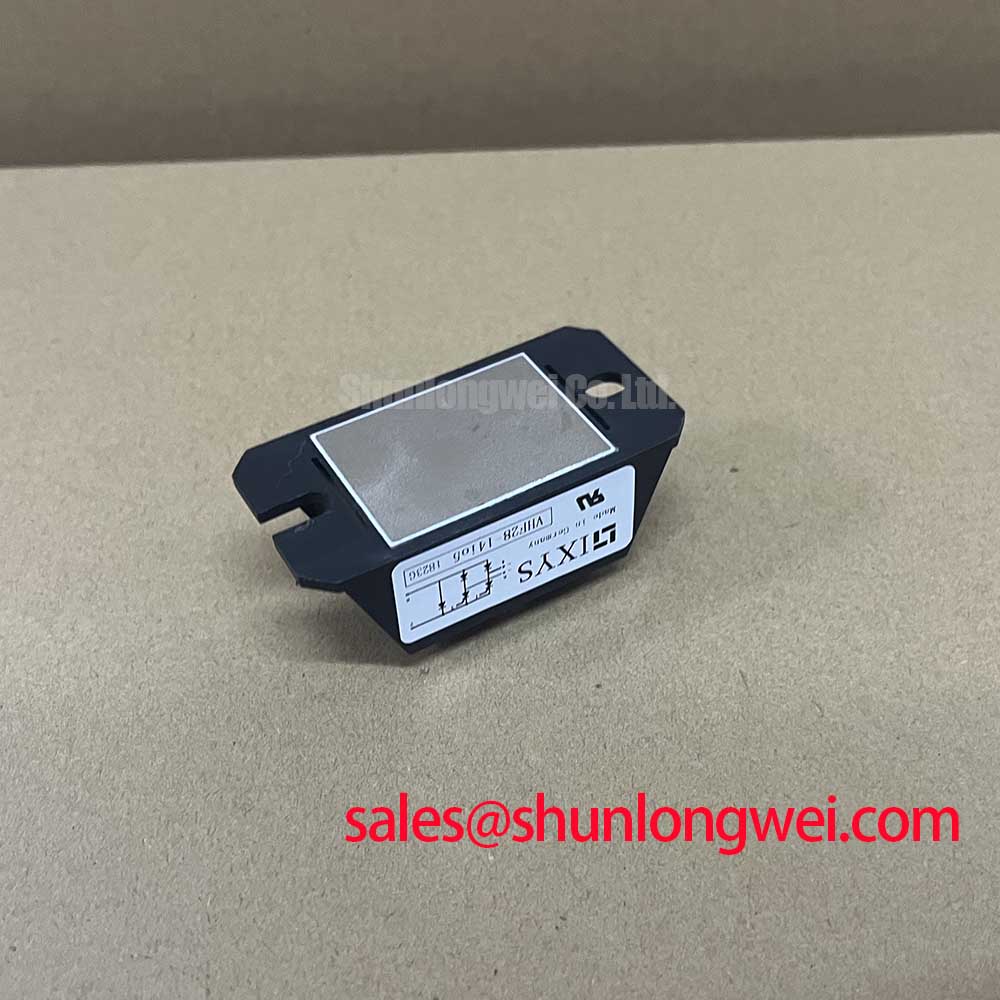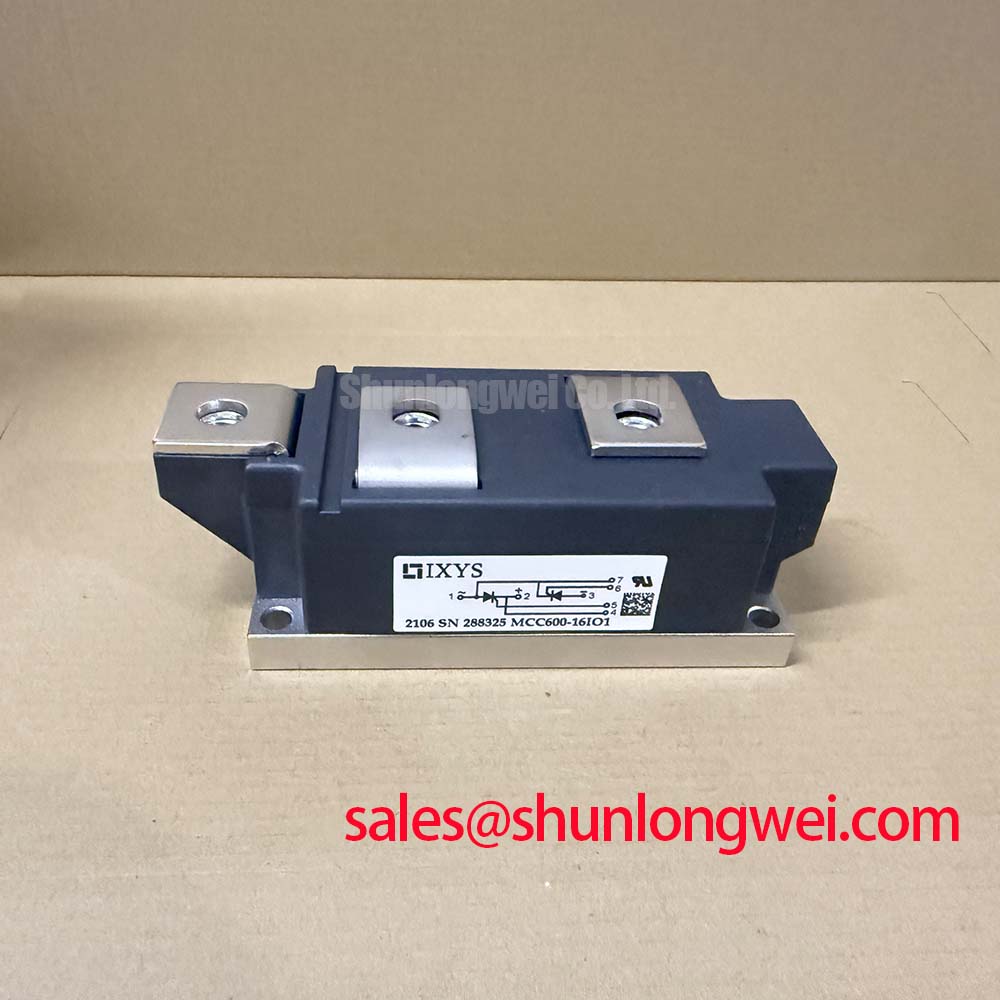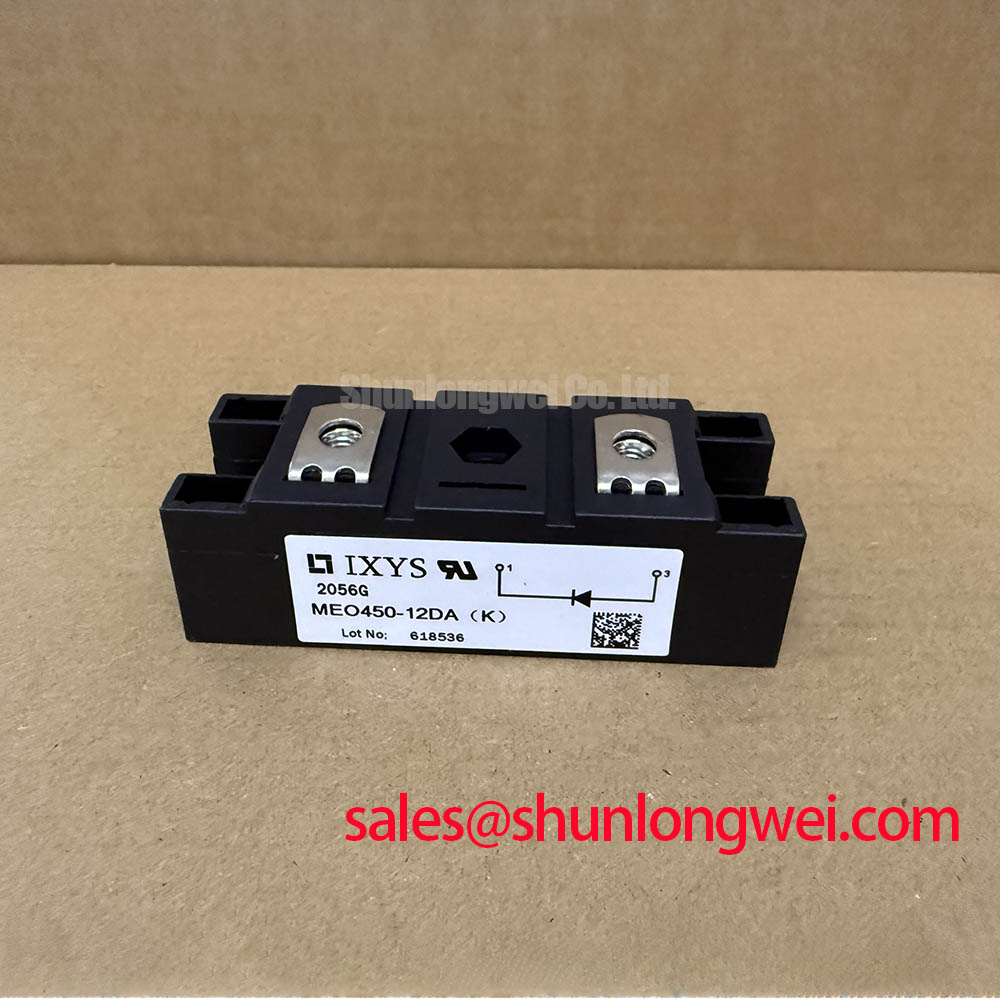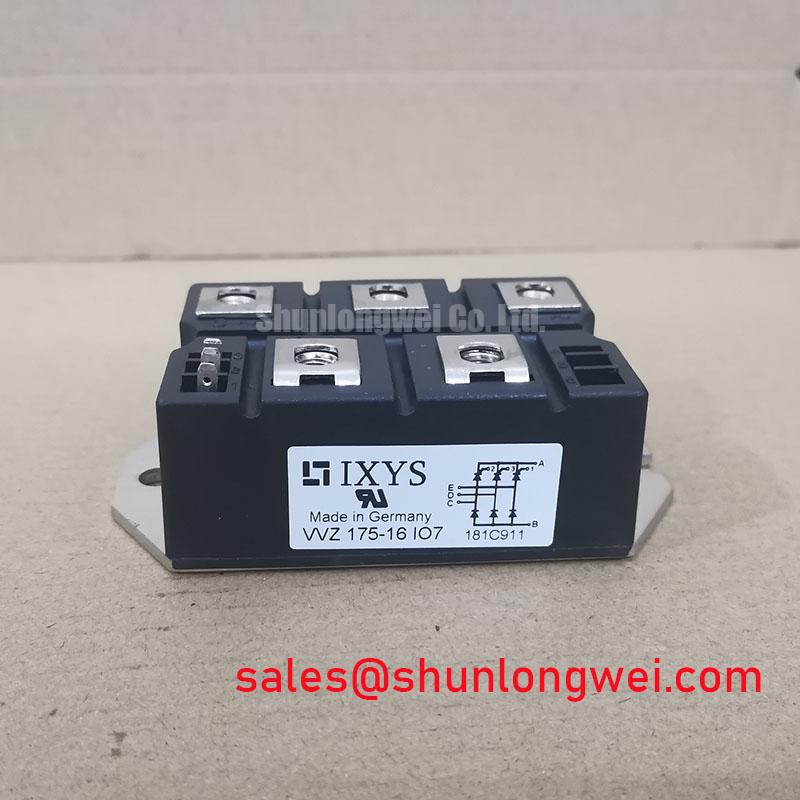VHF28-14io5 Fast Recovery Diode Module: Low-Loss Switching
Engineered for Minimal Switching Losses and Superior Dynamic Performance in High-Frequency Power Conversion
The IXYS VHF28-14io5 is a dual fast recovery diode module architected for high-frequency power conversion systems where efficiency and thermal stability are paramount. Its core value lies in its ultra-fast reverse recovery characteristic, which directly minimizes switching losses and enables more compact and efficient designs. How does a fast recovery diode improve SMPS efficiency? By rapidly transitioning from a conducting to a blocking state, it curtails the period of simultaneous high voltage and current in the switching transistor, drastically cutting energy waste. With its isolated baseplate, this module simplifies thermal management and assembly.
- Top Specs: 1400V | 30A | t_rr 35 ns
- Key Benefits: Minimized switching losses; Simplified thermal design.
Deconstructing High-Speed Performance: Inside the VHF28-14io5
At the heart of the VHF28-14io5's performance lies its advanced silicon die technology, specifically optimized for rapid state transitions. The defining characteristic is its typical reverse recovery time (t_rr) of just 35 nanoseconds. In power circuits, when a diode switches off, there's a brief period where it conducts current in reverse. This "recovery" phase causes significant power loss in the main switching element, like an IGBT Module, and generates electromagnetic interference (EMI). The ultra-fast t_rr of this module curtails this event, leading to a substantial reduction in turn-on losses for the associated transistor.
This efficiency is complemented by its thermal design. The module utilizes a Direct Copper Bonded (DCB) aluminum oxide ceramic baseplate. This construction provides high electrical isolation of 2500V~, allowing multiple modules to be mounted on a single, non-isolated heatsink without needing bulky and less efficient insulating pads. The Junction-to-Case Thermal Resistance (RthJC) acts like the diameter of a thermal pipeline. A lower value, like the 0.8 K/W per diode in the VHF28-14io5, signifies a wider pipe, allowing heat to be evacuated from the active silicon die to the heatsink more effectively, ensuring dependable operation under load.
A Data-Centric Look: VHF28-14io5 in Context
To empower your design decisions, it is useful to position the VHF28-14io5's specifications against other available technologies. This is not a recommendation, but a factual presentation to aid in your evaluation process based on application priorities.
| Parameter | IXYS VHF28-14io5 | Standard Recovery Diode Module (Typical) | Engineering Implication |
|---|---|---|---|
| Reverse Recovery Time (t_rr) | ~35 ns | >200 ns | Enables efficient operation at much higher frequencies (>50 kHz) with significantly lower switching losses. |
| Forward Voltage (VF) @ 25A | Standard rectifiers may have lower conduction loss, making the VHF28-14io5's advantage most prominent where switching loss dominates. | ||
| Topology | Dual Diodes (Series) | Often available in dual, common anode/cathode, or bridge configurations. | The series configuration is well-suited for half-bridge or chopper circuits. For full-wave rectification, a device like the MDD95-12N1B offers a different integrated topology. |
Core Electrical and Thermal Specifications
The following parameters are extracted from the official datasheet to provide a foundation for your system analysis. For comprehensive data, including characteristic curves and application notes, please refer to the manufacturer's documentation.
| Parameter | Symbol | Conditions | Value |
|---|---|---|---|
| Maximum Repetitive Reverse Voltage | V_RRM | - | 1400 V |
| Average Forward Current | I_FAVM | Per diode, Tc = 85°C | 30 A |
| Forward Voltage | V_F | I_F = 35 A, Tj = 25°C | 1.4 V (Max) |
| Reverse Recovery Time | t_rr | I_F = 1A, -di/dt = 100 A/µs, V_R = 30V | 35 ns (Typ) |
| Parameter | Symbol | Conditions | Value |
|---|---|---|---|
| Operating Junction Temperature | T_vJ | - | -40 to +150 °C |
| Thermal Resistance, Junction to Case | R_thJC | Per diode | 0.8 K/W (Max) |
| Isolation Test Voltage | V_ISOL | 50/60 Hz, RMS, t=1min | 2500 V~ |
The Strategic Value of Low-Loss Diodes in Modern Power Design
The push for greater energy efficiency, driven by standards like 80 PLUS and government regulations, places a premium on components that minimize power loss. What is the key benefit of the VHF28-14io5's 35ns trr? It significantly reduces switching losses in high-frequency applications. This capability is not just about saving energy; it is a strategic enabler. Lower losses mean less waste heat, which allows for smaller heatsinks, higher power density, and ultimately, a lower total cost of ownership. In applications like uninterruptible power supplies and solar inverters, higher efficiency translates directly to longer battery runtime or greater energy yield. The VHF28-14io5 supports this trend by providing a foundational component for building next-generation, high-efficiency power converters.
Enabling Efficiency in Demanding Power Conversion Systems
The unique combination of high-speed performance, robust voltage rating, and efficient thermal management makes the VHF28-14io5 a strong candidate for a range of power electronic applications. Its capabilities are particularly valuable in circuits where fast switching is essential for performance and system size.
- Switched-Mode Power Supplies (SMPS): Ideal for use as an output rectifier or boost diode in high-frequency SMPS, where its fast recovery minimizes losses and improves overall efficiency.
- Uninterruptible Power Supplies (UPS): Serves effectively in the inverter and PFC stages of UPS systems, contributing to higher efficiency and reliability.
- Motor Drive Systems: Can be implemented as a freewheeling diode in AC motor drives and servo applications, protecting the main IGBT switches and reducing energy loss during commutation.
- Welding Equipment: The module's robust characteristics are suitable for high-frequency inverter-based welding power supplies.
For switch-mode power supplies operating above 50 kHz, the VHF28-14io5's 35 ns trr makes it a superior choice over standard rectifier diodes.
Engineering Your Next High-Efficiency Design
The VHF28-14io5 from IXYS provides the core attributes needed to develop efficient, power-dense, and reliable systems. By leveraging its ultra-fast recovery and thermally efficient packaging, designers can meet stringent performance targets. To further investigate its suitability for your specific application, review the complete datasheet and consider its dynamic characteristics in your circuit simulations. Understanding the interplay between components is crucial, and resources on topics like preventing component failure can provide valuable context for robust system design.
Technical Inquiries on the VHF28-14io5
- What is the primary advantage of the VHF28-14io5's isolated baseplate?The primary advantage is simplified thermal management. The 2500V isolation allows direct mounting to a common heatsink without additional insulating materials, which can degrade thermal performance and increase assembly complexity. This improves heat transfer and allows for more compact system layouts.
- How does the 35 ns reverse recovery time (t_rr) impact IGBT performance in a half-bridge circuit?In a half-bridge, the freewheeling diode's recovery behavior directly affects the turn-on loss of the opposing IGBT. A short t_rr of 35 ns means the diode clears its reverse recovery charge very quickly. This results in a smaller, shorter current spike through the turning-on IGBT, significantly reducing its E_on (turn-on energy) loss and improving overall system efficiency.
- Is the VHF28-14io5 suitable for soft-switching applications?While optimized for hard-switching applications where its fast recovery is critical, it can also be used in soft-switching topologies like ZVS (Zero Voltage Switching) converters. In such cases, the low forward voltage drop becomes a more dominant factor for efficiency, and its robust design ensures reliability, although the primary benefit of the ultra-fast t_rr is less pronounced than in hard-switched circuits.


